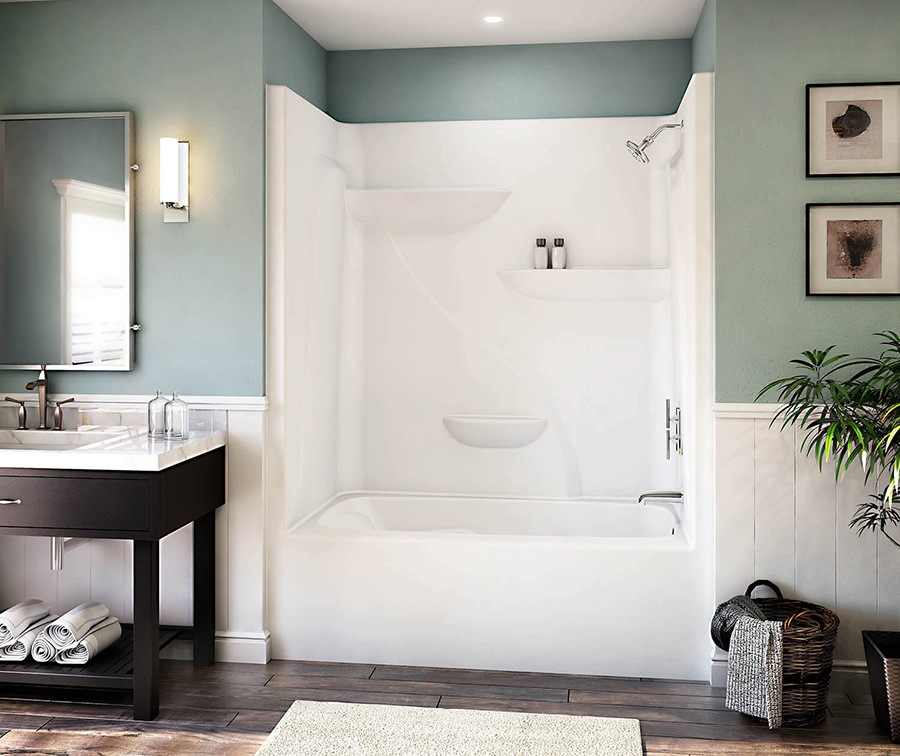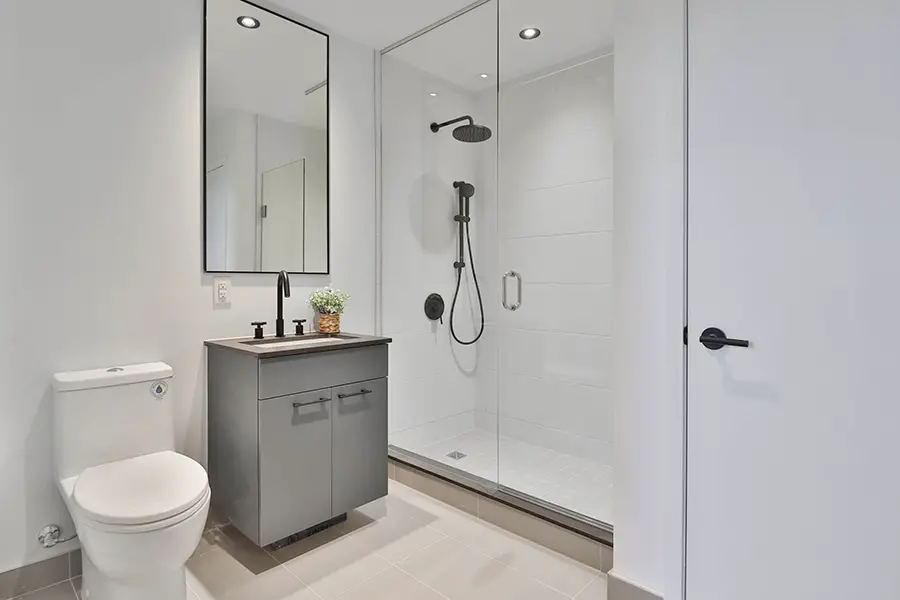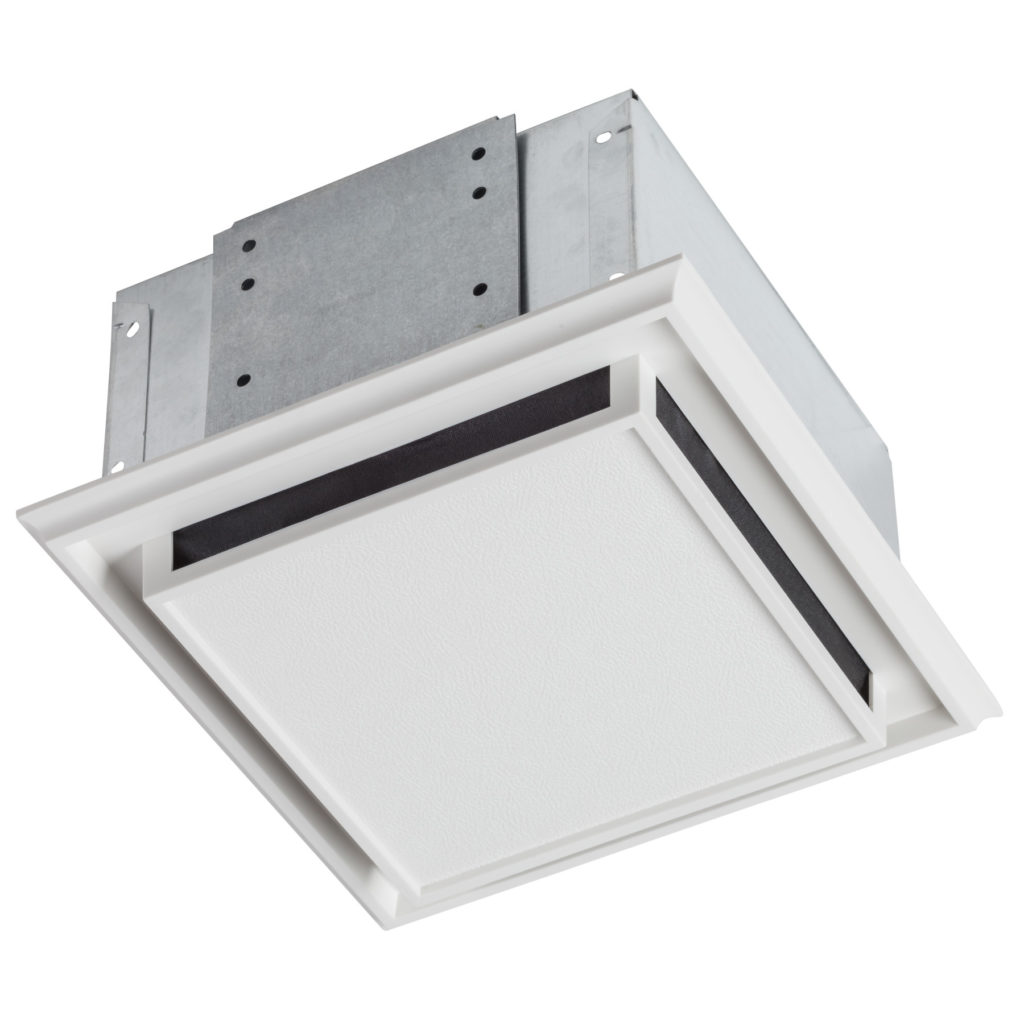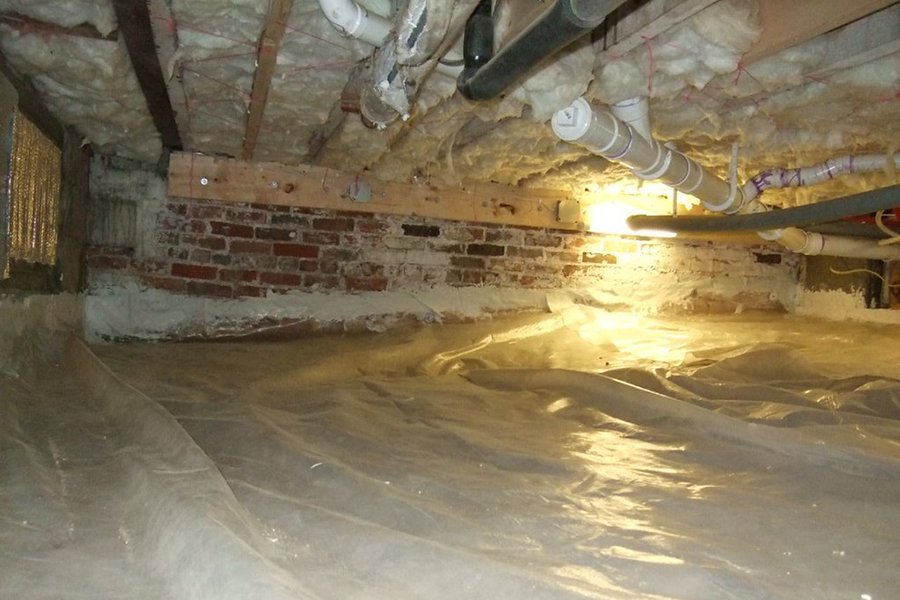Image Source: Aquatic
The early 2020s have seen a surge in home renovations, due in large part to the extra time most of us have spent there! Bathrooms are becoming an increasingly popular value addition in homes, from a self-care perspective as well as financial. As the largest item in the room, bathtub and shower replacements are typically the biggest ticket item in an upgrade, and come with a lot of questions. Today we’re talking about the differences between acrylic and fiberglass options, and the information that can help you decide which is right for your home.
Similarities between acrylic and fiberglass
Acrylic and Fiberglass are two of the most prevalent materials on the market today for bathtubs and shower walls, and there are several common features of both:
- Both options are reasonably inexpensive, when compared to cast iron, porcelain-enameled steel, marble, etc.
- Manufacturing is pretty streamlined, and therefore both options are readily available at home improvement stores.
- Both have a shiny finish.
- Both are comparatively lightweight, and so are suitable for easy and second-story installation without additional structural support in the home.
- Both are reasonably simple to remove due to light weight and ability to cut into pieces for removal (with safety gear, of course!).
- Both are expected to last for about 10-15 years.
Fiberglass tubs and showers
Fiberglass, or FRP (Fiberglass Reinforced Plastic) tubs and shower walls are made from small, thin strings of glass that are heated and woven together to ultimately create the shape of the piece in one solid material. This occurs over several layers and is then smoothed and coated with gel coat resin. This makes the finished product a bit lighter overall than acrylic, and also somewhat flexible. If you push on your shower wall and it gives a little, it’s most likely fiberglass!
Fiberglass tub or shower maintenance
Fiberglass is a little more sensitive to damage than acrylic due to its construction. Once the protective outer surface is damaged or worn away from use or abrasive cleaning products, the porous substance underneath is prone to staining or damage. Therefore, cleaning a new fiberglass shower or bath is best accomplished with simple and eco-friendly vinegar and baking soda! Fiberglass is also a bit easier to repair if damage occurs, and kits to do so can be found at any home improvement store.
Acrylic tubs and showers
Acrylic bathtubs and shower walls are manufactured by heating sheets of acrylic to 390 degrees Fahrenheit and lowering the sheets over a mold. Tiny pinpricks in the material and gravity help the sheet sink onto and take the form of the mold. Once cooled, the new piece is removed from the mold and turned over, and the underside is reinforced with the same fiberglass strings used to create a fiberglass tub. Because this production style is more crafted than manufactured, acrylic tubs are typically more expensive than their fiberglass counterparts. They are also a little heavier (average 100 lbs to fiberglass’s 70 lbs), more durable, and offer a wider variety of textures and colors. Versatility is a large selling point that often tips the scale towards acrylic pieces. Additionally, Acrylic is a bit warmer to the touch than fiberglass, and retains heat better when bathing than fiberglass.
Acrylic tub or shower maintenance
Acrylic tubs are more hardy than fiberglass and can withstand the use of more abrasive cleaners, though if maintained properly, may not ever require them. Due to their construction, they are much less likely to be damaged, while also being harder to repair if they are. It’s best to work with a professional to repair any damage unless you are a professional yourself!
Comparison
Overall, your specific needs in the home will dictate your choice between the two. If you are replacing multiple units at once (perhaps in an Airbnb or rental property), fiberglass may be the way to go, as the cost will be significantly less in bulk. On the other hand, you may want to spend the extra money on a tub or shower that can withstand potential added abuse from tenants. If you’re looking for something unique in shape or color for your home bath or zen space, you may find acrylic offering you just the right style. Additionally, a home with young and growing kids may appreciate an acrylic option, as it will withstand wear and tear better over time with more use. Acrylic is less likely to discolor or “yellow” as quickly as fiberglass, as its surface is a thicker, uniform sheet.
Cost
While of course, high-end models can run up to $14,000 or higher, on average, an acrylic tub or shower enclosure will run between $700 and $1500, depending on features and size. Repairs to acrylic surfaces run between $300-$800, and in the event of a serious and expensive repair, replacement may be the more feasible solution. Fiberglass, on the other hand, could cost as little as $200 when replacing with existing plumbing fixtures, and on average runs up to about $800. Repairing a fiberglass tub runs between $20 for materials for a DIY solution, to about $250 for a technician to do the repair.
The options available at our fingertips today can sometimes be overwhelming, so hopefully, this helps demystify some of the options. Comment below to let us know which you prefer and why!





I want to give my bathroom at home a renovation next month since it looks quite worn out with old age now, so I was considering using acrylic materials for this project. I appreciate you letting us know that acrylic is known to be a bit warmer to the touch compared to fiberglass, so it can retain heat better when bathing. I’ll be sure to take note of this while I look for a remodeling contractor in Rehoboth Beach to hire for my acrylic shower renovation soon.